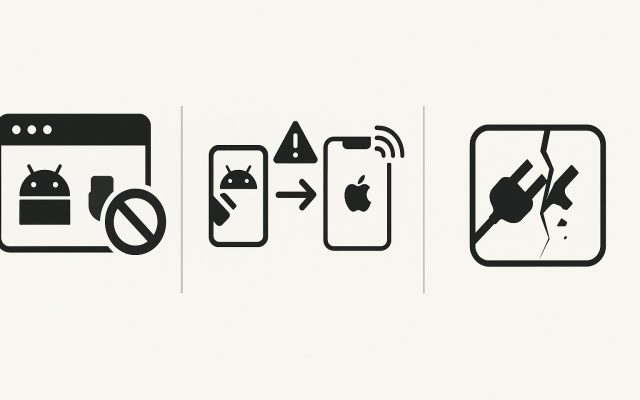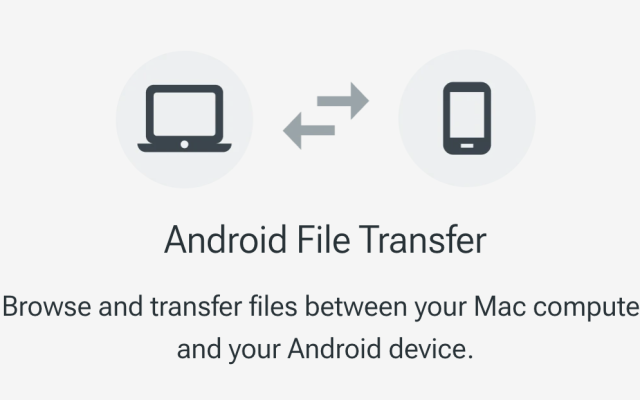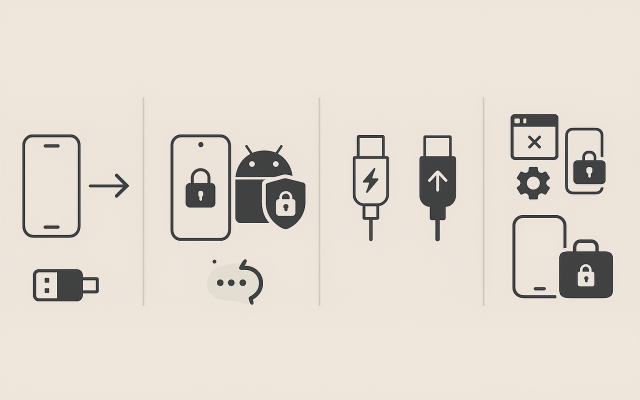In 2025, USB cables are more versatile than ever, supporting everything from charging devices to transferring data and even connecting displays. However, not all USB cables are created equal. Some are designed solely for charging, while others can handle data transfer. Understanding the differences is crucial to ensure your devices communicate effectively.
Understanding USB Cable Types
USB cables come in various forms, each with specific capabilities:
- USB-A: The traditional rectangular connector found on many computers and chargers.
- USB-C: A reversible, compact connector now standard on most modern devices.
- Micro-USB: Previously common on smartphones and tablets, now largely replaced by USB-C. Anker
It’s essential to note that the connector type alone doesn’t determine whether a cable supports data transfer. The internal wiring and design specifications play a significant role.
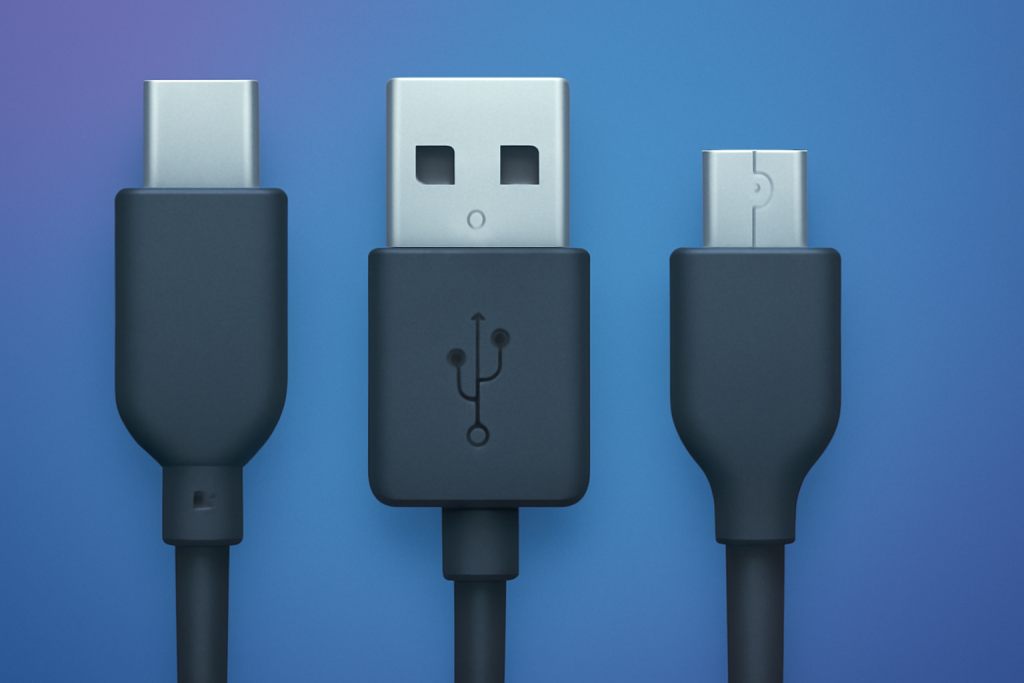
Visual Indicators of Data Transfer Capability
While not foolproof, certain visual cues can hint at a cable’s functionality:
- Connector Color: USB 3.0 and later cables often have blue or teal-colored connectors, indicating higher data transfer capabilities.
- Cable Thickness: Data cables tend to be thicker due to additional wiring for data transmission.
- Markings and Labels: Look for labels like “SS” (SuperSpeed) or “USB 3.0/3.1” on the cable or packaging. Digilent Blog
However, these indicators aren’t always reliable. Some manufacturers may use misleading labels, and the absence of markings doesn’t necessarily mean the cable lacks data transfer capability.
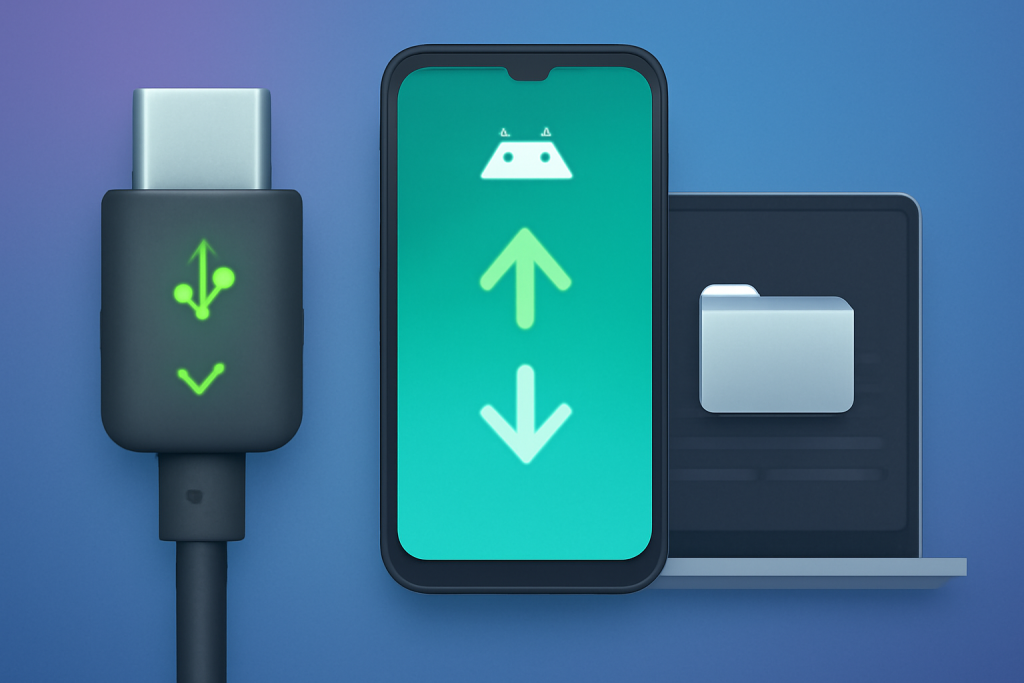
Testing Your Cable
To definitively determine if a USB cable supports data transfer:
- Use a Known Data Cable: Connect a device known to support data transfer (like a smartphone or external hard drive) to your computer using the suspected cable. If the device is recognized and accessible, the cable supports data transfer.
- Check Transfer Speed: Transfer a file and monitor the speed. A USB 2.0 cable will transfer data at a maximum of 480 Mbps, while USB 3.0 and later cables can handle speeds up to 5 Gbps or more.
- Use a USB Cable Tester: Devices like the USB Cable Tester can check if all necessary data lines are present and functioning. These tools are particularly useful for identifying faulty or counterfeit cables. Wikipedia
The Role of USB Standards
The USB standard defines the capabilities of a cable:
- USB 2.0: Offers data transfer speeds up to 480 Mbps.
- USB 3.0/3.1: Supports speeds up to 5 Gbps.
- USB 3.2/USB4: Can achieve speeds up to 40 Gbps, depending on the cable and device compatibility.
Not all cables labeled as “USB 3.0” or “USB-C” support these higher speeds. Some may be designed solely for charging and lack the necessary data lines. MelGeek
Charge-Only vs. Data Cables
Charge-only cables are designed to carry power but lack the data lines required for communication between devices. These cables are often thinner and may not have the necessary internal wiring for data transfer. Konnected.io
Using a charge-only cable for data transfer can result in slower speeds or complete failure to connect. It’s essential to use the appropriate cable for your needs.
Real-World Experiences
Users on forums like Reddit have shared their experiences with USB cables:
“I bought a USB-C cable off Amazon, and it turned out to be charge-only. My phone wouldn’t connect to my computer for file transfer.”
“The cable looks great, but it doesn’t support data transfer. It’s just for charging.”
These anecdotes highlight the importance of verifying a cable’s capabilities before relying on it for data transfer.
Conclusion
In 2025, with the variety of USB cables available, it’s crucial to ensure you’re using the right one for your needs. While visual indicators and testing methods can help, always verify a cable’s specifications and capabilities before use. This approach will ensure efficient and reliable data transfer between your devices.
